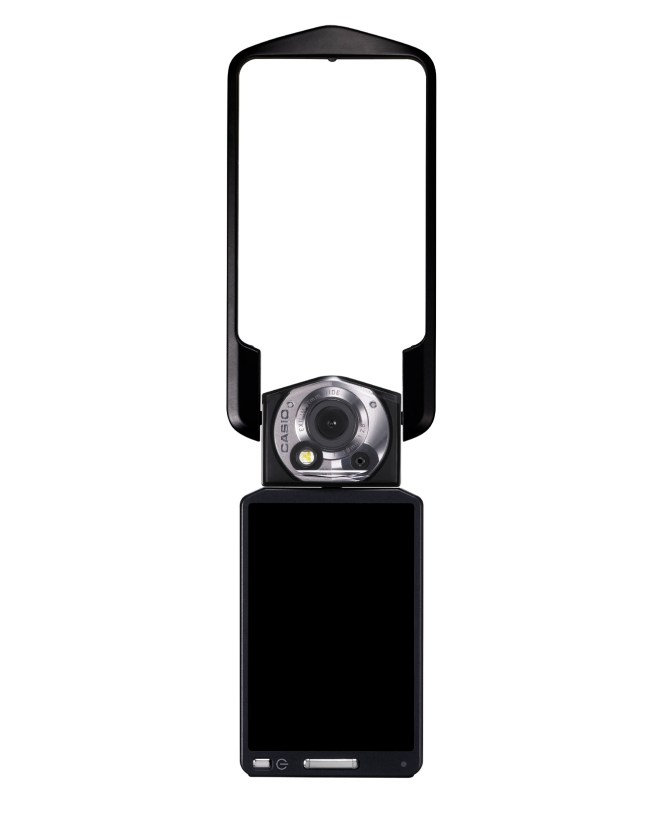 Casio is taking advantage of the Facebook photo craze with its 2011 release. At CES today the camera manufacturer introduced the TRYX, an extremely flexible digicam built with self portraits in mind.
Casio is taking advantage of the Facebook photo craze with its 2011 release. At CES today the camera manufacturer introduced the TRYX, an extremely flexible digicam built with self portraits in mind.
Casio executive Jin Nakayama debuted the camera this afternoon, and stressed how the device can capture images at virtually any angle. The TRYX has an extremely tiny body with a sturdy feel, and features a snap out and swivel frame that can be used as a handle for high-angled photos, a lean-to for timed group shots, or as a hook for taking photos while the camera itself is hanging. As far as hardware goes, the camera utilizes Casio’s EXILIM Engine HS, which the company developing in order for the device to process multiple operations simultaneously.

Casio didn’t stop at hardware, though. In 2011, it will also be presenting its Casio Imaging Square service, an online “digital craft” center for converting digital photos into art. Chairman and CEO of Casio America (and son of the founder) Kazuhiro Kashio explained Imaging Square, claiming the program’s image processor uses art conversion algorithms to create virtual paintings that allow users easy access to endless creativity. In reality, it’s the poor man’s PhotoShop. Various free photo editors include filters that accomplish or outdo Imaging Square’s function, there are even free apps for smartphones that can similar things with comparable results. Kashio stressed that Imaging Square means that “this process [of photo editing] no longer belongs to only a hundred people with special skills.” Even with the hyperbole, we think he’s underestimating the aptitude of most photographers.
Imaging Square will also include project storage and gallery options, extremely like those of Flickr, Picasa, or Kodak. The only innovative piece to this converter is that it’s also included on the TRYX, so without any PC work at all users are able to take “filtered” photos. Most photographers need to be a more crucial piece of the editing process, but novices who might want to skip to the end result will like the feature.



